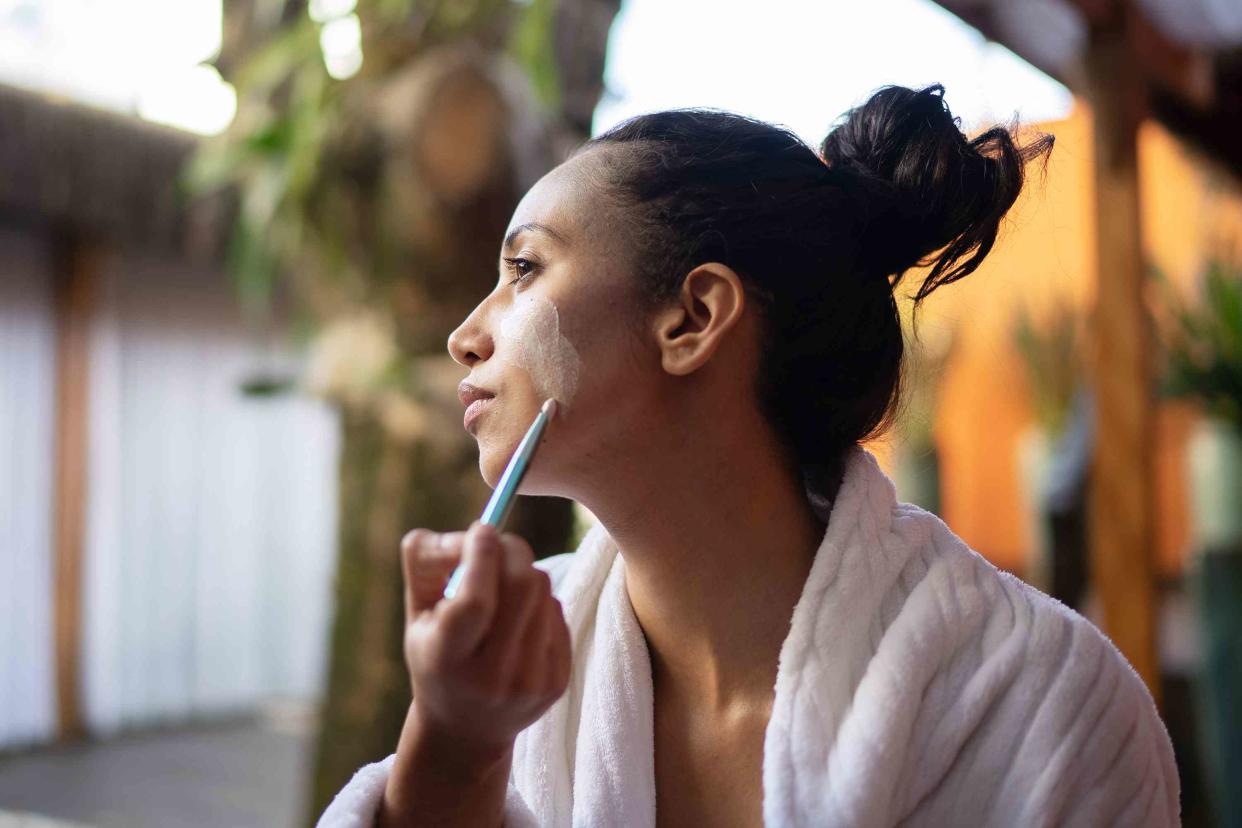3 Simple Ways to Take Care of Skin After a Chemical Peel

The benefits of a chemical peel are plenty. This face treatment, known for resurfacing the skin to reveal a brighter and clearer complexion, really does wonders when your skin needs a reset. Hadley King, MD, a New York City-based dermatologist lists unclogging pores, reducing acne breakouts, smoothing out uneven skin texture, plumping the skin, stimulating collagen production, and reducing the appearance of fine lines and wrinkles as just some of the many benefits you get when you opt in to a chemical peel. Who wouldn’t want this?
But as with any skin treatment, chemical peels come with some side effects that you should take note of. According to Michele Farber, MD, a board-certified dermatologist at Schweiger Dermatology Group, chemical peels — whether you do it at-home or as an in-office treatment — can cause redness, mild irritation, sun sensitivity, and flaking. More serious side effects, Dr. Farber says, includes infections such as cold sore breakouts.
So what can you use on your skin? Can you wear makeup after a chemical peel? How long does the recovery process last? Don’t panic: there are ways to mitigate any negative downsides and prevent you from having to deal with something such as cold sores and ways to figure out where your makeup falls into all of this. You just need to follow three simple steps, outlined below.
:I’ve Been Using These Famous $20 Facial Peel Pads for 3 Years, and the Results Are Unparalleled
Have a simple skincare routine
Less is more, especially after a treatment like a chemical peel. Both Dr. Farber and Dr. King strongly advise with keeping your routine as simple as possible while your skin heals.
“It is best to keep regimens simple post-peel,” says Dr. Farber. “Use a gentle, non-soap cleanser to wash the skin. Follow with a fragrance-free moisturizer, ideally a thicker cream to help hydrate sensitive skin.”
For cleansers, Dr. King recommends the Dove Beauty Bar because it doesn’t contain any harsh detergents and will cleanse skin thoroughly without stripping it of its natural oils. For moisturizers, she says you’ll want to look for ones that contain humectants, emollients, and occlusives, which will help relieve any tight or itchy feeling you might get post-treatment.
Dr. Farber agrees and says you’ll want to look for ingredients that are not only hydrating but also protect and support the skin barrier, such as ceramides, hyaluronic acid, and glycerin. She recommends using something like Vaseline Original Petroleum Jelly or Aquaphor Healing Ointment for sensitive areas. Dr. King’s pick for moisturizer is the Charlotte Tilbury Magic Cream Moisturizer, which contains nourishing and hydrating ingredients like glycerin, hyaluronic acid, lactic acid, shea butter, rosehip oil, and vitamins E and C to lock in moisture and strengthen the skin barrier.
Avoid harsh ingredients
Dr. King says you’ll want to avoid products that will be drying or irritating, such as any exfoliants (think alpha hydroxy- and beta hydroxy acids), retinoids, alcohol, charcoal, and clay. Dr. Farber agrees and suggests steering clear from benzoyl peroxide and lightening ingredients like hydoquinone as well. “Allow the skin to fully recover post-procedure before restarting products with these ingredients,” she says. “Typically around a week.”
:The Dos and Don'ts of Mixing Skincare Ingredients
Use sunscreen — and reapply
Daily sunscreen use is a must regardless, but especially post-chemical peel. The sun’s harmful UV rays may irritate your already sensitive skin the days after a treatment, so you need the best protection. Dr. Farber suggests at least opting for a sunscreen with SPF 30 and zinc oxide; she says that physical blockers like zinc oxide will be the least irritating to your skin post-procedure while also providing coverage from UVA and UVB rays. she likes something like Colorscience’s Sunforgettable Total Protection, which can cover redness while also protecting skin from the sun. She adds that it’s a great alternative to makeup, which can further irritate the skin days after post-peel. So, hold off on your makeup routine, at least for a couple of days while your skin heals.
The above three steps should be more than enough to treat your skin post-peel, and as mentioned before, Dr. Farber says it should take about a week for your skin to reset after treatment. However, recovery is still all dependent on how your skin reacts to the peel and what type of chemical peel you get. Dr. King explains that some chemical peels are gentler than others, so definitely ask your practitioner about best post-treatment care.
Mild redness and irritation are considered normal side effects, but anything that worries you or isn’t getting better after a long period of time warrants a trip to the doctor. Both experts urge seeing a dermatologist should this happen to address risk of infection, discoloration, or scarring.
For more InStyle news, make sure to sign up for our newsletter!
Read the original article on InStyle.

